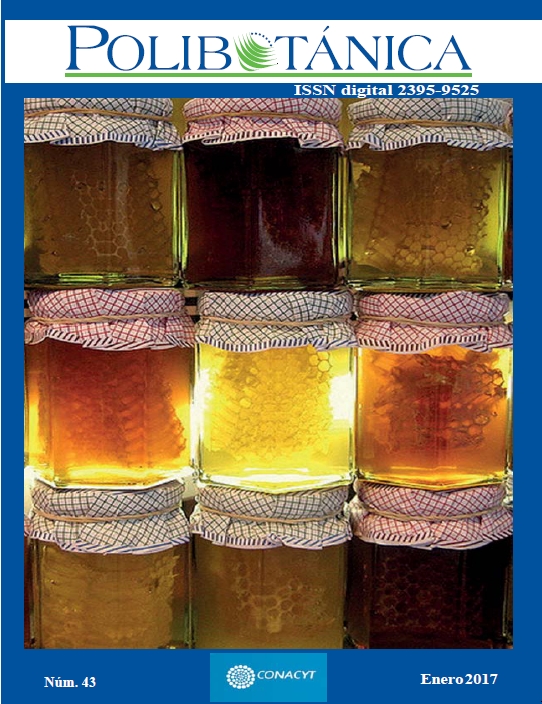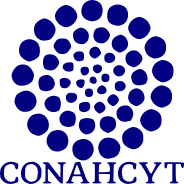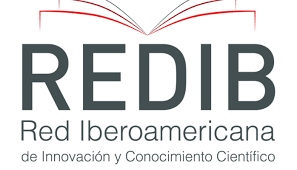PHYSICOCHEMICAL CHARACTERISTICS OF FRUITS FROM WILD OPUNTIA SPECIES FROM TWO SEMIARID REGIONS OF JALISCO, MEXICO
DOI:
https://doi.org/10.18387/polibotanica.43.10Keywords:
Opuntia, Cactaceae, fruits, physico-chemical characteristicsAbstract
Species of the genus Opuntia are of great importance in Mexico. In Jalisco, a state located in Western Mexico, there are 29 recognized species of Opuntia, but only four of them are grown for consumption as vegetables and fruit, three are used for ornamental purposes, and the rest (22 species) are not exploited. The objective of this research was to evaluate morphological and chemical characteristics of fruit from wild Opuntia species grown at two municipalities of Jalisco, Mexico (Lagos de Moreno and Ojuelos de Jalisco). The variability in size, total fresh weight, edible portion weight, shell thickness and postharvest characteristics (moisture, ashes, total acidity, °Brix and pH), and pigment concentration (betaxanthins and betacyanins) was analyzed in 15 species of eight species of the genus Opuntia from both regions. Ten to fifteen fruits of each species were analyzed; parameters of descriptive statistics were obtained from the results; and were subjected to analysis of variance and to the Tukey test (α = 0.05). A greater diversity of wild species was collected at the municipality of Lagos de Moreno. Only three species: “memela” (O. cantabrigiensis), “cardona” (O. streptacantha) and “cascarona” (O. hyptiacantha) were present in both regions. O. ficus-indicaspecies presented the highest values of fruit size, total weight and pulp weight. Moisture content in all samples tested was in the range from 80 to 90%, the ash content values ranged between 0.3 and 1.0%. The fruits showed low acidity (pH > 4.5) and high content of soluble sugars (11-14 °Brix). The species collected in Lagos de Moreno presented the highest contents of betalains, highlighting Opuntia icterica “larguita” with the highest content of total betalains (32.44 mg/100g). Results show the high variability in morphological and chemical characters of Opuntia species fruits from two semiarid regions in the state of Jalisco, Mexico. This information is important in order of making proposals for the use and conservation of wild species and highlight its value as genetic resources in regions of Jalisco.References
Abdel-Hameed el-S.S.; M.A. Nagaty, M.S. Salman, y S.A. Bazaid. 2014. “Phytochemicals, nutritional and antioxidant properties of two prickly pear cactus cultivars (Opuntia ficus-indica Mill.) growing in Taif, KSA”. Food Chem, 160: 31-38.
http://www.sciencedirect.com/science/article/pii/S0308814614004518#
Andrade-Cetto A., y H. Wiedenfield. 2011. “Anti-hyperglycemic effect of Opuntia streptacantha Lem.”. J Ethnopharmacol, 133: 940-943. http://www.sciencedirect.com/science/article/pii/S037887411000807X
Aparicio-Fernández X.; S. Loza-Cornejo, M.G. Torres-Bernal, y N.J. Velázquez-Placencia. 2013. “Chemical and morphological characterization of Mammillaria uncinata (Cactaceae) fruits”. J. PACD, 15: 32-41. http://www.jpacd.org/?modulo=JS&ID=14
Aquino-Bolaños E.N.; Y. Chavarría-Moctezuma, J.L. Chávez-Servia, R.I. Guzmán Gerónimo, E.R. Silva-Hernández, e I. Verdalet-Guzmán. 2012. “Caracterización fisicoquímica de siete variedades de tuna (Opuntia spp.) color rojo-violeta y estabilidad del pigmento de las dos variedades con mayor concentración”. Investigación y Ciencia de la Universidad Autónoma de Aguascalientes, 55: 3-10. http://www.uaa.mx/investigacion/revista/Hemeroteca/REVISTA%2055.pdf#page=5
Association of Analytical Chemists (AOAC). 1990. Official Methods of Analysis. 15th edition. Washington, DC, USA.
Arreola-Nava, H.J. 1990. Inventario de las cactáceas de Jalisco y su distribución. Cact. Suc. Mex. 35(1):3-12.
Badui-Dergal S. 2012. Clases de alimentos. En: López Ballesteros G. y Gutiérrez Hernández B. (Eds.). La Ciencia de los Alimentos en la Práctica. PEARSON, México, pág. 171-178.
Bargougui A.; P. le Pape, y S. Triki. 2013. “Antiplasmodial efficacy of fruit extracts and cladodes of Opuntia ficus-indica”. J Nat Sci Res, 3(6): 31-37. http://www.iiste.org/Journals/index.php/JNSR/article/view/5701/5835
Barthlott, W., y D.R. Hunt. 1993. Cactaceae. En: Kubitzki K., Rohmer, J.G. y Bittridi, V. (Eds.). The families and Genera of Vascular Plants. Springer-Verlag, Berlin. pp. 161-197.
Becerra-Jiménez J., y A. Andrade-Cetto. 2012. “Effect of Opuntia streptacantha Lem. on alpha-glucosidase activity”. J Ethnopharmacol, 139: 493-496. http://www.sciencedirect.com/science/article/pii/S0378874111008476
Cai, Y.; M. Sun, W. Schliemann, y H. Corke. 2001. “Chemical stability and colorant properties of betaxanthin pigments from Celosia argentea”. J Agric Food Chem, 49: 4429-4435. http://pubs.acs.org/doi/abs/10.1021/jf0104735
Cardador-Martínez, A.; C. Jiménez-Martínez, y G. Sandoval. 2011. “Revalorization of cactus pear (Opuntia spp.) wastes as a source of antioxidants”. Ciênc. Tecnol. Aliment., Campinas, 31(3): 782-788. http://www.scielo.br/scielo.php?pid=S0101-20612011000300036&script=sci_arttext
Castellanos-Santiago E., y E.M. Yahia. 2008. “Identification and quantification of betalains from the fruits of 10 Mexican prickly pear cultivars by High-Performance Liquid Chromatography and Electrospray Ionization Mass Spectrometry”. J Agric Food Chem, 56: 5758–5764. http://pubs.acs.org/doi/abs/10.1021/jf800362t
Coria-Cayupan, Y.S.; M.J. Ochoa, y M.A. Nazareno. 2011. “Health-promoting substances and antioxidant properties of Opuntia sp. Fruits. Changes in bioactive-compound contents during ripening process”. Food Chem, 126(2): 514-519. http://www.sciencedirect.com/science/article/pii/S0308814610014512
Chávez-Santoscoy R.A.; J.A. Gutiérrez-Uribe, y S.O. Serna-Saldívar. 2009. “Phenolic composition, antioxidant capacity and in vitro cancer cell cytotoxicity of nine prickly pear (Opuntia spp.) juices”. Plant Food Hum Nutr, 64: 146-152. http://link.springer.com/article/10.1007/s11130-009-0117-0
Chougui, N.; A. Tamendjari, W. Hamidji, S. Hallal, y A. Barras. 2013. “Oil composition and characterisation of phenolic compounds of Opuntia ficus-indica seeds”. Food Chem, 139: 796-803. http://www.sciencedirect.com/science/article/pii/S0308814613000782
Devalraju, S.; M.K. Arunasree, K.R. Roy, T.C. Reddy, G.V. Reddy, y P. Reddanna. 2007. “Betanin a betacyanin pigment purified from fruits of Opuntia ficus-indica induces apoptosis in human chronic myeloid leukemia cell line-k562”. Phytomedicine, 14: 739-746. http://www.sciencedirect.com/science/article/pii/S0944711307000517
Díaz-Medina E.M.; E.M. Rodríguez-Rodríguez, y C. Díaz-Romero. 2007. “Chemical characterization of Opuntia dillenii and Opuntia ficus-indica fruits”. Food Chem, 103: 38-45. http://www.sciencedirect.com/science/article/pii/S030881460600608X
El-Mostafa, K.; Y. El Kharrassi, A. Badreddine, P. Andreoletti, J. Vamecq, M. S. El Kebbaj, N. Latruffe, G. Lizard, B. Nasser, y M. Cherkaoui-Malki. 2014. “Nopal cactus (Opuntia ficus-indica) as a source of bioactive compounds for nutrition, health and disease”. Molecules, 19(9): 879-901. http://www.mdpi.com/1420-3049/19/9/14879/htm
Felker P., y P. Inglese. 2003. “Short-term and long-term research needs for Opuntia ficus-indica (L.) Mill. utilization in arid areas”. J. PACD, 5: 131-151. http://www.jpacd.org/?modulo=JS&ID=6
Felker P.; S. del C. Rodríguez, R.M. Casoliba, R. Filippini, D. Medina, y R. Zapata. 2005. “Comparison of Opuntia ficus-indica varieties of Mexican and Argentine origin for fruit yield and quality in Argentina”. J Arid Environ, 60: 405–422. http://www.sciencedirect.com/science/article/pii/S0140196304001314
Figueroa-Cares. I.; M.T. Martínez-Damián, E. Rodríguez-Pérez, M.T. Colinas-León, S. Valle-Guadarrama, S. Ramírez-Ramírez, y C. Gallegos-Vázquez. 2010. “Contenido de pigmentos, otros compuestos y capacidad antioxidante en 12 cultivares de tuna (Opuntia spp.) de México”. Agrociencia, 44: 763-771. http://www.scielo.org.mx/scielo.php?script=sci_arttext&pid=S1405-31952010000700003
García˗Cruz, L.; Y. Salinas˗Moreno, y S. Valle˗Guadarrama. 2012. “Betalains, phenolic compounds and antioxidant activity in pitaya de mayo (Stenocereus griseus H.)”. Rev Fitotec, 35(5): 1-5.
González-Durán, A.; M.E. Riojas-López, y H.J. Arreola-Nava. 2001. El género Opuntia en Jalisco. Guía de campo. Universidad de Guadalajara-Comisión Nacional para el Conocimiento y Uso de la Biodiversidad. Guadalajara, Jalisco, México. 135 p.
Guzmán U.; S. Arias, y P. Dávila. 2003. Catálogo de Cactáceas Mexicanas. UNAM-CONABIO. México.
Guzmán-Maldonado S.H.; G. Herrera-Hernández, D. Hernández-López, R. Reynoso-Camacho, A. Guzmán-Tovar, F. Vaillant, y P. Brat. 2010. “Physicochemical, nutritional and functional characteristics of two underutilised fruit cactus species (Myrtillocactus) produced in central Mexico”. Food Chem, 121: 381–386. http://www.sciencedirect.com/science/article/pii/S0308814609014599
Habibi Y.; M. Mahrouz, M.F. Marais, M.R. Vignon. 2004. “An arabinogalactan from the skin of Opuntia ficus-indica prickly pear fruits”. Carbohyd Res, 339: 1201-1205. http://www.sciencedirect.com/science/article/pii/S0008621504000679
Halmi S.; B. Benlakssira, K. Bechtarzi, Z. Djerrou, H. Djeaalab, F. Riachi, y Y. Hamdi Pacha. 2012. “Antihyperglycemic activity of prickly pear (Opuntia ficus-indica) aqueous extract”. Int J Med Arom Plants. 2(3): 540-543. http://www.cabdirect.org/abstracts/20123332319.html;jsessionid=95B19D531E4E1964A1CB769A2FC462B9
INEGI 2010. Instituto Nacional de Estadística y Geoagrafía (México).
Karababa E.; Y. Coşkuner, y S. Aksay. 2004. “Some physical fruit properties of cactus pear (Opuntia spp.) that grow wild in the eastern Mediterranean region of Turkey”. J. PACD, 6: 1-8. http://www.jpacd.org/?modulo=JS&ID=7
Lira-Ortiz, A.; F. Reséndiz-Vega, E. Ríos-Leal, J.C. Contreras-Esquivel, N. Chavarría-Hernández, A. Vargas-Torres, e I. Rodríguez-Hernández. 2014. “Pectins from waste of prickly pear fruits (Opuntia albicarpa Scheinvar “Reyna”): chemical and reological properties”. Food Hydrocolloid, 37: 93-99. http://www.sciencedirect.com/science/article/pii/S0268005X13003354#
Morales P.; E. Ramírez-Moreno, M. de C. Sánchez-Mata, A.M. Carvalho, e I.C.F.R. Ferreira. 2012. “Nutritional and antioxidant properties of pulp and seeds of two xoconostle cultivars (Opuntia joconostle F. A. C. Weber ex Diguet and Opuntia matudae Scheinvar) of high consumption in Mexico”. Food Res Int, 46(1): 279-285. http://www.sciencedirect.com/science/article/pii/S0963996912000166
Moussa-Ayoub T.; S.K. El-Samahy, S. Rohn, y L. Kroh. 2011. “Flavonols, betacyanins content and antioxidant activity of cactus Opuntia macrorhiza fruits”. Food Res Int, 44: 2169-2174. http://www.sciencedirect.com/science/article/pii/S0963996911001013
Naselli F.; L. Tesoriere, F. Caradonna, D. Bellavia, A. Anzio, C. Gentile, y M.A. Livrea. 2014. “Anti-proliferative and pro-apoptotic activity of whole extract and isolated indicaxanthin from Opuntia ficus-indica associated with re-activation of the onco-suppressor p16INK4a gene in human colorectal carcinoma (Caco-2) cells”. Biochem Biophys Res Commun, 450: 652-658. http://www.sciencedirect.com/science/article/pii/S0006291X14011036
Obón J.M.; M.R. Castellar, M. Alacid, y J.A. Fernández-López. 2009. “Production of a red-purple food colorant from Opuntia stricta fruits by spray drying and its application in food model systems”. J Food Eng, 90: 471-479. http://www.sciencedirect.com/science/article/pii/S0260877408003610#
Osorio-Esquivel O.; A. Ortiz-Moreno, V.B. Álvarez, L. Dorantes-Álvarez, y M.M. Giusti. 2011. “Phenolics, betacyanins and antioxidant activity in Opuntia xoconostle fruits”. Food Res Int, 44(7): 2160-2168. http://www.sciencedirect.com/science/article/pii/S0963996911000986
Patel S. 2013. “Reviewing the prospects of Opuntia pears as low cost functional foods”. Rev Environ Sci Biotechnol, 12: 223-234. http://link.springer.com/article/10.1007/s11157-012-9295-6
Piga A. 2004. “Cactus pear: a fruit of nutraceutical and functional importance”. J PACD, 6: 9-22. http://www.jpacd.org/?modulo=JS&ID=7
Ramadan M.F., y J.T. Morsel. 2003. “Recovered lipids from prickly pear [Opuntia ficus-indica (L.) Miller] peel: a good source of polyunsaturated fatty acids, natural antioxidant vitamins and sterols”. Food Chem, 83(3): 447-456. http://www.sciencedirect.com/science/article/pii/S0308814603001286#
Reyes-Agüero J.A., R. Aguirre, y F. Carlín. 2004. Análisis preliminar de la variación morfológica de 38 variantes mexicanas de Opuntia-ficus-indica (L.) Miller. En: El Nopal, Tópicos de actualidad. Esparza, G., R. Valdez, y J. Méndez G. (eds.) Universidad Autónoma Chapingo and Colegio de Postgraduados. Chapingo, México. Pp: 21-47.
Reyes-Agüero J.A.; J.R. Aguirre-Rivera, y M.H. Hernández. 2005. “Notas sistemáticas y descripción detallada de Opuntia ficus-indica (L.) Mill. (Cactaceae)”. Agrociencia, 39(4): 395-408.
Russel C.H., y P. Felker. 1987. “The prickly pears (Opuntia spp. Cactaceae). A source of human and animal food in semiarid regions”. Econ Bot, 41: 433-445. http://link.springer.com/article/10.1007/BF02859062#page-1
Sáenz C.; H. Berger, J. Corrales-García, L. Galletti, V. García de C., I. Higuera, C. Mondragón, A. Rodríguez-Félix, E. Sepúlveda, y M.T. Varnero. 2006. Utilización agroindustrial del nopal. Boletín de servicios agrícolas de la FAO 162. Organización de las Naciones Unidad para la Agricultura y la Alimentación. Roma. ISSN 1020-4334.
Sanjay P.C.; N.R. Sheth, I.S. Rathod, B.N. Suhagia, y R.B. Maradia. 2013. “Analysis of betalains from fruits of Opuntia species”. Phytochem Rev, 12(1): 35-45. http://link.springer.com/article/10.1007/s11101-012-9248-2#page-1
SAS Institute. 2002. SAS user´s guide statistics. SAS Institute Inc. Cary, NC, USA.
Shetty A., M.K. Rana, y S.P. Preetham. 2012. “Cactus: a medicinal food”. J Food Sci Technol, 49(5): 530-536. http://link.springer.com/article/10.1007/s13197-011-0462-5#page-1
SIEG. Sistema de Información Estadística y geográfica de Jalisco. 2012a. Ojuelos de Jalisco. http://sieg.gob.mx/contenido/Municipios/cuadernillos/OjuelosdeJalisco.pdf. Accesado: 10/02/2015.
SIEG. Sistema de información Estadística y Geográfica de Jalisco. 2012b. Lagos de Moreno. http://sieg.gob.mx/contenido/Municipios/cuadernillos/LagosdeMoreno.pdf. Accesado: 10/02/2015.
Stintzing F.C.; K.M. Herbach, M.R. Mosshammer, R. Carle, W. Yi, S. Sellappan, C.C. Akoh, R. Bunch, y P. Felker. 2005. “Color, betalain pattern and antioxidant properties of cactus pear (Opuntia spp.) clones”. J Agr Food Chem, 53: 442-451. http://pubs.acs.org/doi/abs/10.1021/jf048751y
Strack D.; T. Vogt, y W. Schliemann. 2003. “Recent advances in betalain research”. Phytochemistry 62: 247-269. http://www.sciencedirect.com/science/article/pii/S0031942202005642
Sumaya-Martínez M.T., S. Cruz-Jaime, E. Madrigal-Santillán, J.D. García-Paredes, R. Cariño-Cortés, N. Cruz-Cansino, C. Valadez-Vega, L. Martínez-Cárdenas, y E. Alanís-García. 2011. “Betalain, acid ascorbic, phenolic contents and antioxidant properties of purple, red, yellow and white cactus pears”. Int J Mol Sci, 12: 6452-6468. http://www.mdpi.com/1422-0067/12/10/6452/htm
Zegbe A.J. y J. Mena-Covarrubias. 2010. “Postharvest changes in weight loss and quality of cactus pear fruit undergoing reproductive bud thinning”. J. PACD, 12: 1-11. http://www.jpacd.org/downloads/Vol12/1_JAZegbe%20JPACD12.pdf
Downloads
Additional Files
Published
Issue
Section
License

Polibotánica by Departamento de Botánica de la Escuela Nacional de Ciencias Biológicas del Instituto Politécnico Nacional se distribuye bajo una Licencia Creative Commons Atribución-NoComercial-CompartirIgual 4.0 Internacional.




















